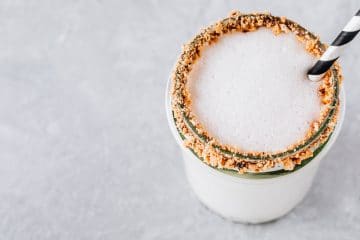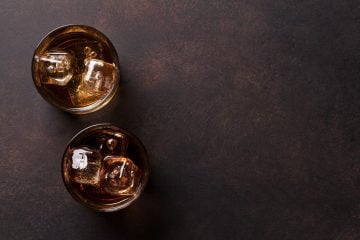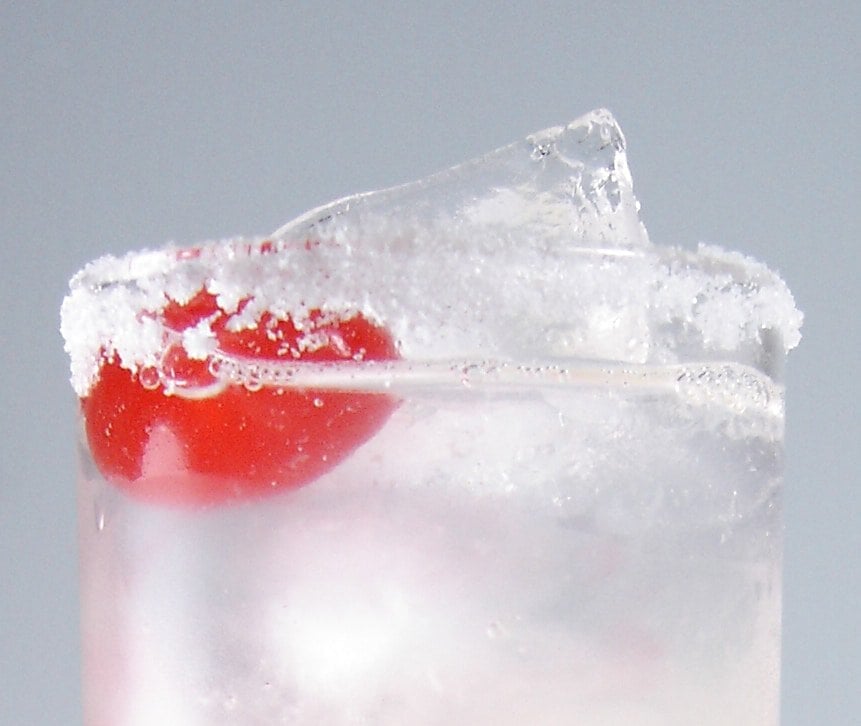Oh yay, another post on the Monkey Gland is what a lot of people might be saying. Sure, it’s been a topic of interest among bloggers and the Cocktail Brain Trust™ for the past few years. Most reviews are glowing, kind of like Canadians over President Obama (circa 2009). Personally, I suspect a lot of people like the cocktail because it makes people giggle like little school girls when they hear where the name came from. Yes, as many of you know it was a xenotransplantation of monkey testicles into humans, to improve sexual drive. Lovely, just the perfect thing to name a drink after. Okay, aside from the rehash of the Monkey Gland, a scan of the original 1923 newspaper article detailing the drink, is included below.
[wp_ad_camp_1]The following is an article from the April 23, 1923 edition of the Washington Post, describing the creation of this new and popular cocktail.
In the 1920s, the Monkey Gland would have been the equivalent of the modern “F*#k” brand of cocktails, created by lesser “bar attendants” of today, and without the gads of sugar. Basically, this drink was designed to be a cocktail with a kick, and something that would attract parched American tourists.
The name—especially in Paris—would have evoked the image of eunuch monkeys, french chimeras, and terrified french maids. Sounds disturbing to me, but hey, times have changed. The reality was probably horribly swollen testicles, Ebola and one rich Doctor named Voronoff. How about a drink?
Monkey Gland
2 oz London Dry Gin
2 oz Fresh Pressed Orange Juice
Dash Absinthe
Dash Raspberry Syrup
Instructions: Mix well with ice, strain and serve.
When it comes to the taste portion I’m not overly thrilled. It’s gin and OJ with a hint of anise. Whoopee!
Obviously, this drink was created for its marketing value. A strange name with sexual innuendo and the addition of a few drops of that evil, villainous spirit, Absinthe. By 1923 absinthe was well into its afterlife, so any legal stores of absinthe would have been used sparingly, as per the dash. But the absinthe name, like a dead Obi-Wan Kenobi, would have been more powerful than one could imagine. Just the thought of imbibing the forbidden fruit would have been enough to drive American tourists into the bar.
The Monkey Gland cocktail has all the markings of a PR campaign, but it was created by a reputable bartender. Sure, in the 1920s the term “reputable bartender” was an oxymoron, but remember this was Paris. To sell a drink: make it red, forbidden and sexual and you have a winning formula.
If you think of drinks that have become modern bar mainstays, like Red Bull or Jagermeister, both have mysterious connections to body parts and fluids. One was rumoured to contain bull testicles and the other the blood of elk. Both not true, but both very good for marketing. Why? I have no idea, but people do weird things, like trans-species implants. I think the Monkey Gland falls into this category and really isn’t a classic cocktail, as much as it is an early example of shrewd bartender marketing.
If you enjoy the Monkey Glad you might want to try the Aviation Cocktail.
[wp_ad_camp_3]



